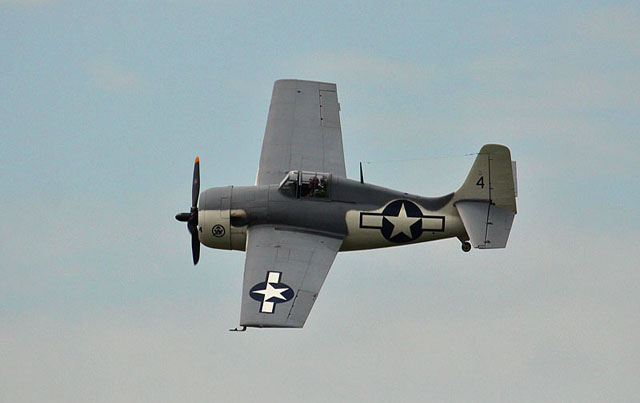
1943 Grumman Wildcat
The Wildcat evolved from the Grumman F3F biplane and was originally designed to be a biplane, but a major design shift in 1936 turned it into a cantilever monoplane.
Designated the F4F, its first flight took place in September of 1937. Fifty-four fixed wing aircraft were ordered in 1939, and in 1940, the Navy decided that all future aircraft were to be built with folding wings. The French ordered 100 aircraft before the war broke out, but when the Germans invaded and France fell, the British took over the deliveries, renaming it the Martlet.
As Grumman got involved in the production of its next fighter, the Hellcat, Wildcats were built under license by General Motors and were designated as FM-2s. Wildcats played a major role in protecting the American carriers during the Battle of Midway when four Japanese carriers were sunk and the war turned in favor of the Americans. Wildcats were used through 1943 until they were replaced by later designs.
Specifications
- Year Built — 1943
- Wingspan — 38′
- Cruise Speed — 210 mph
- Top Speed — 332 mph
- Gross Weight — 8,271 lbs
- Engine — Wright R-1820 (1350 hp)
- Armament — Four .50 caliber machine guns, Two 250 lb bombs on wing racks
Kermit’s Comments
The Wildcat has an interesting flap system that is activated by the vacuum system. Instead of using positive pressure to operate the flap cylinder, this aircraft uses negative pressure or suction. A large tank in the rear of the aircraft stores the “negative” air pressure. At higher speeds, the negative pressure does not create enough force to overcome the air loads to lower the flaps. It will not hurt the system, as in some aircraft, to put the flaps down at high speed. They just simply won’t come down! Pilots used this to their advantage in dogfights and could select the flap handle down before engaging another aircraft. If, during the dogfight, the airplane happened to slow down below a certain speed, the flaps would creep out. This gave the Wildcat a tighter turning radius, which was a major advantage in a dogfight, as they could potentially turn inside the opponent and get on his tail.